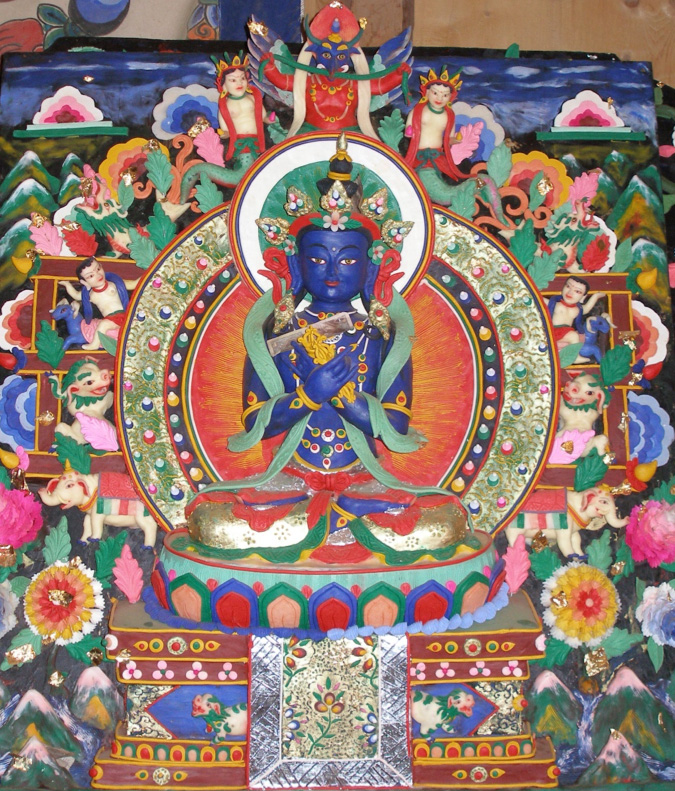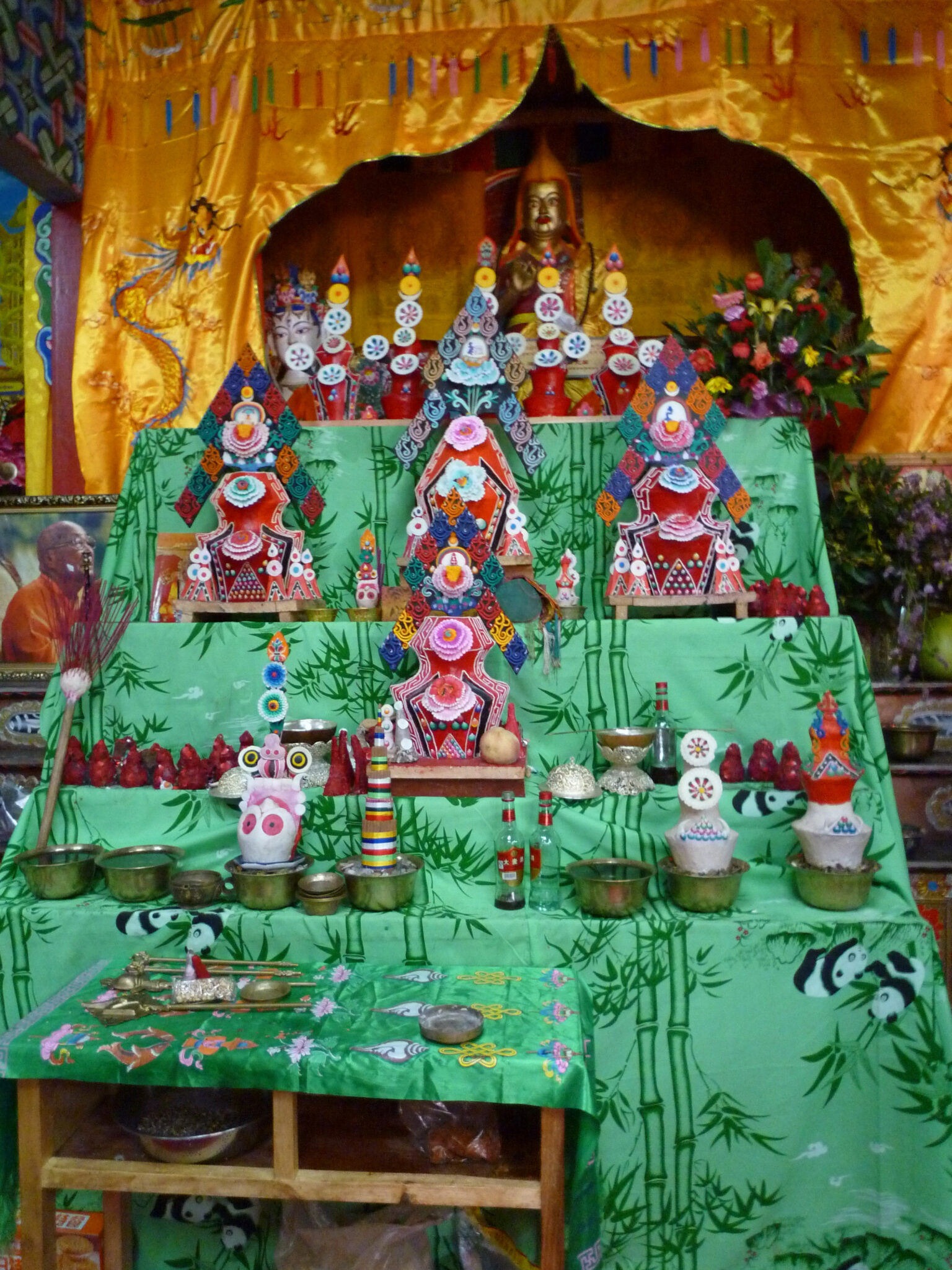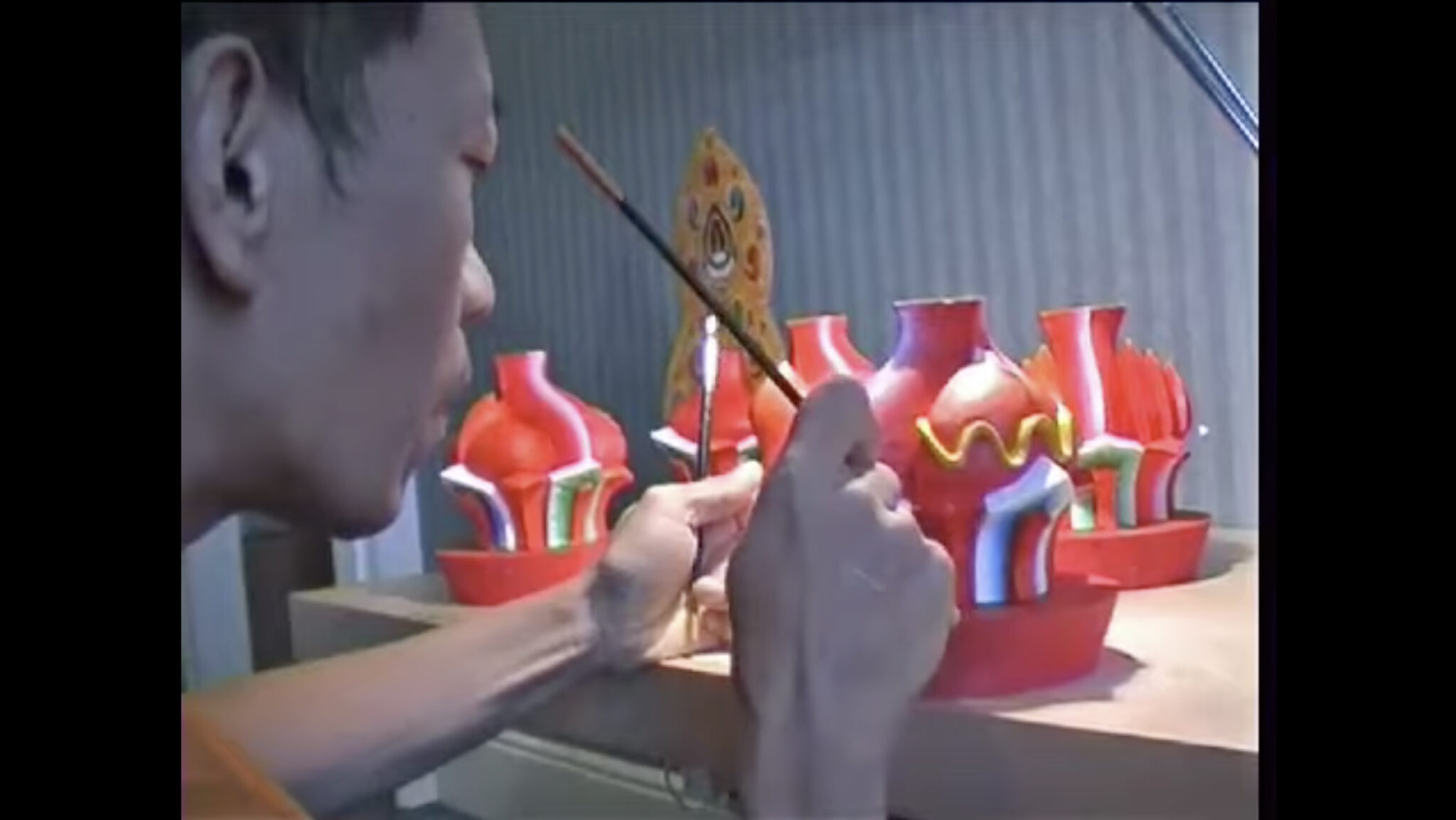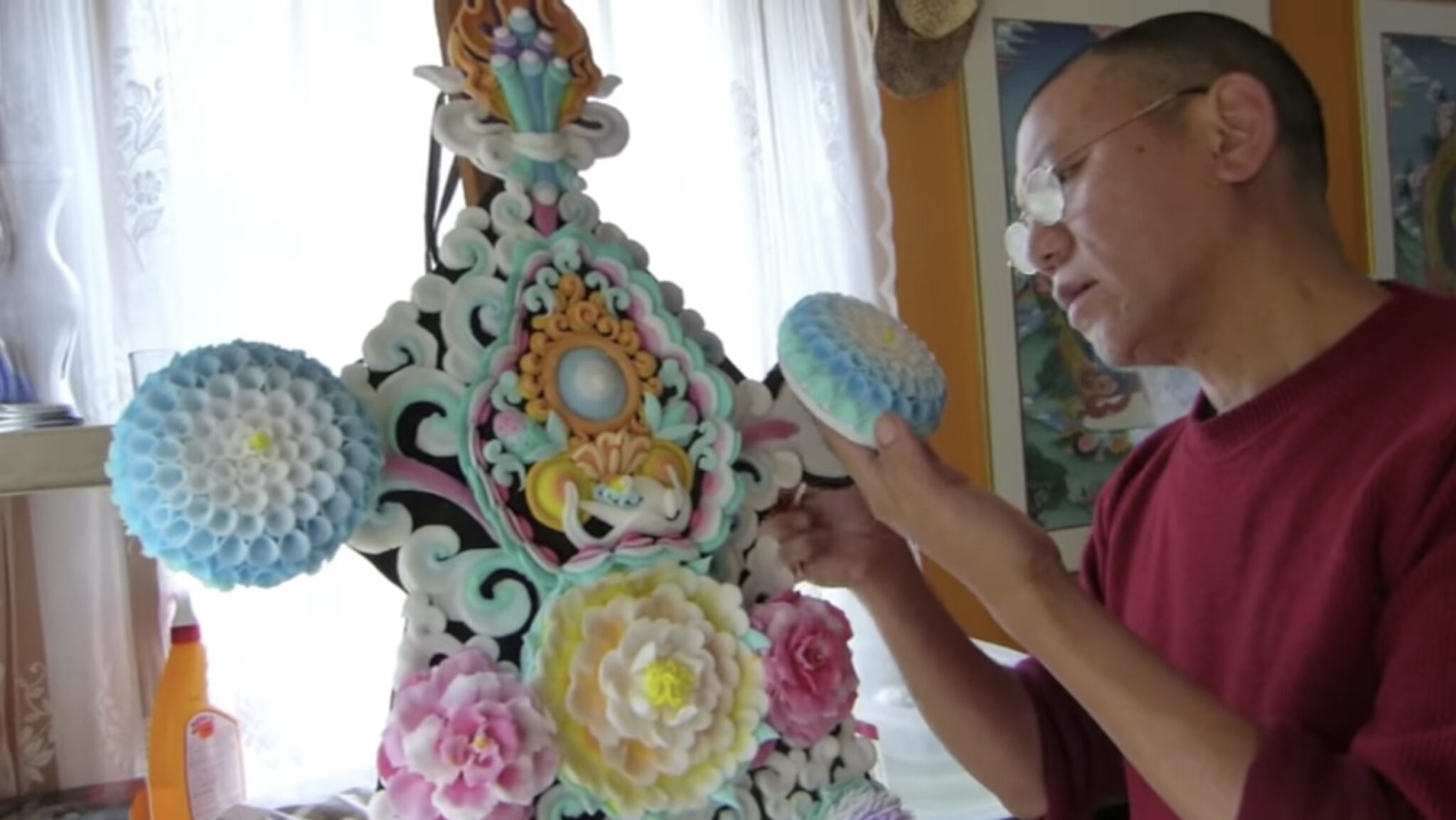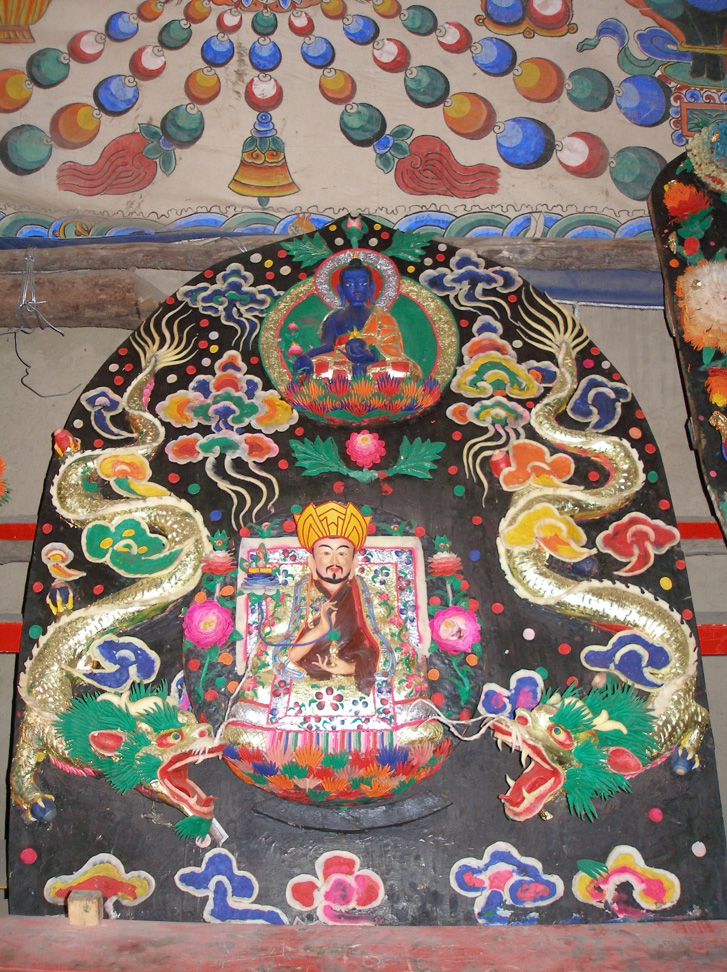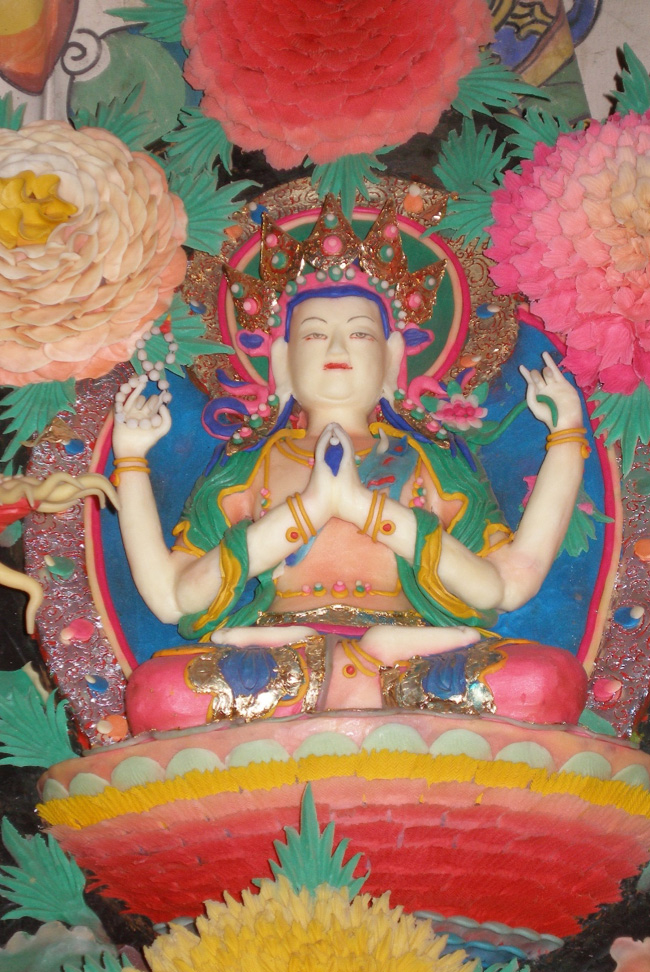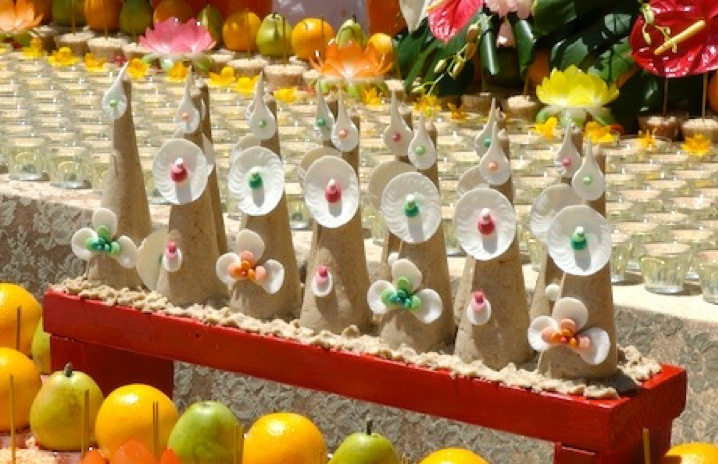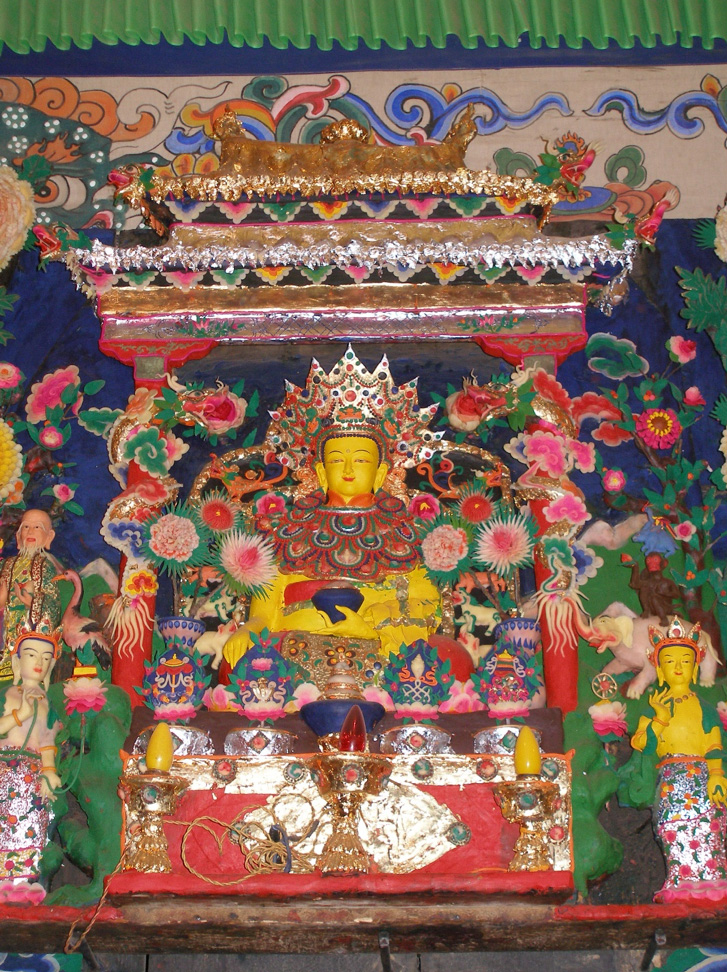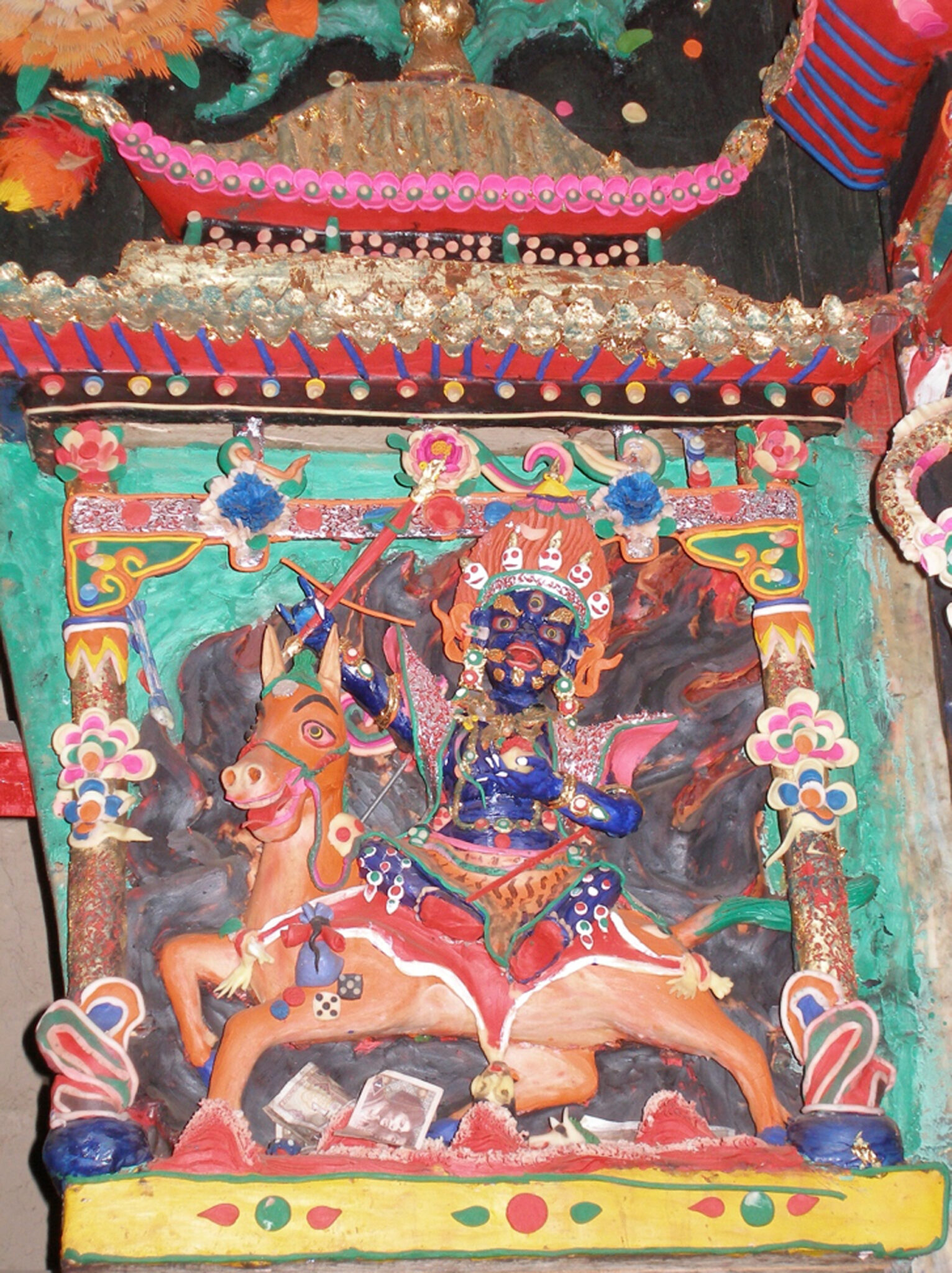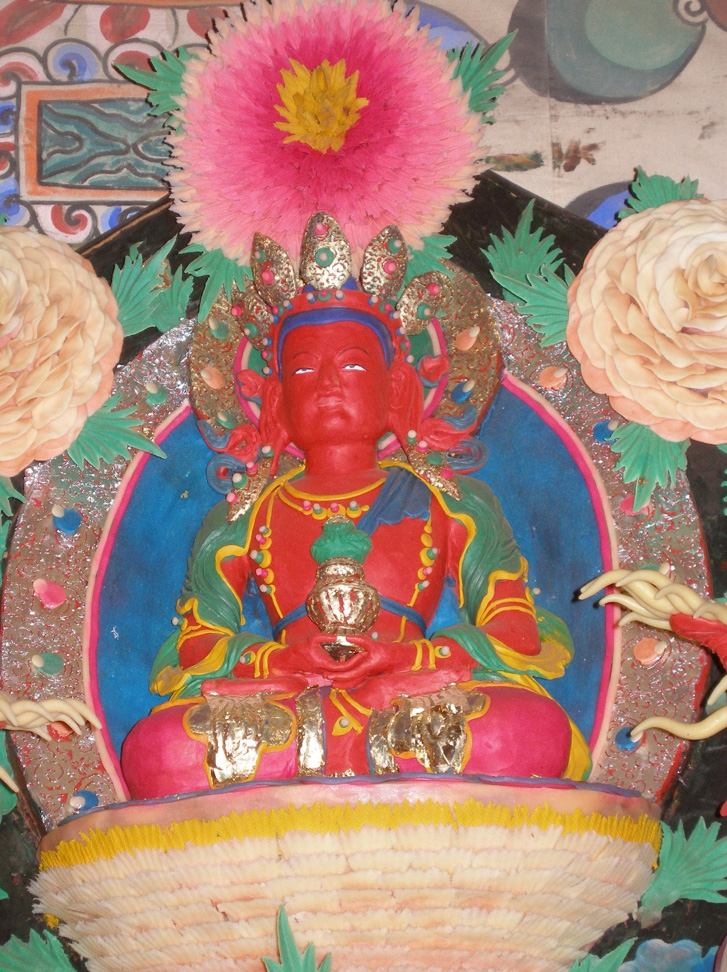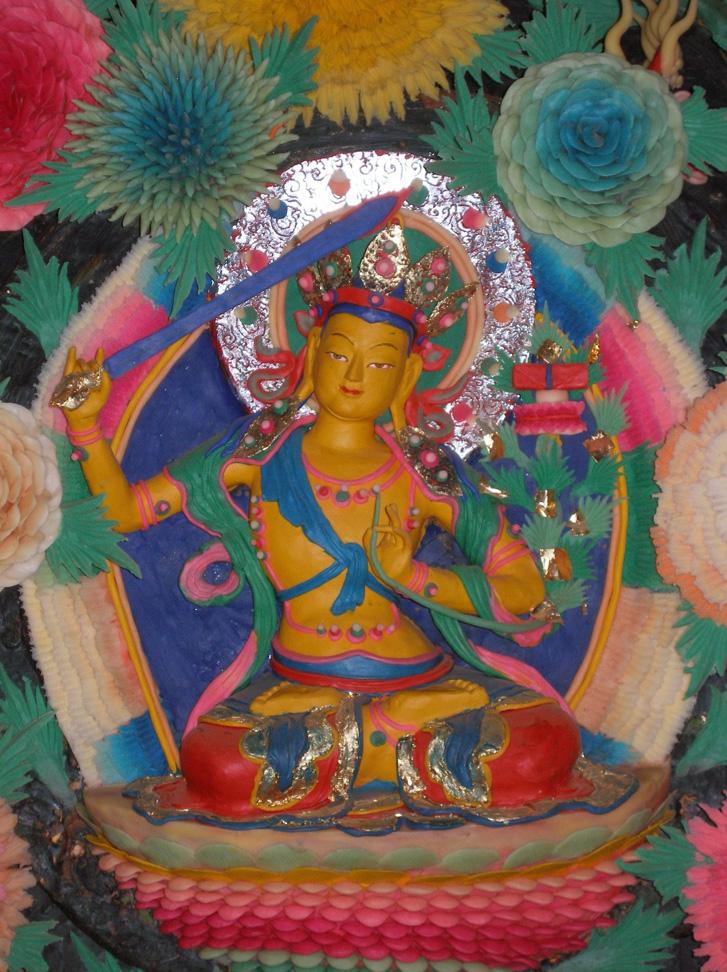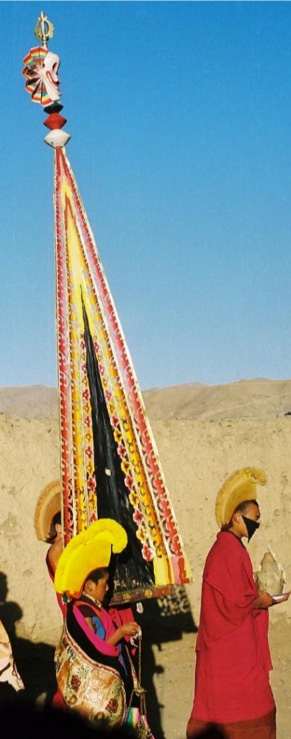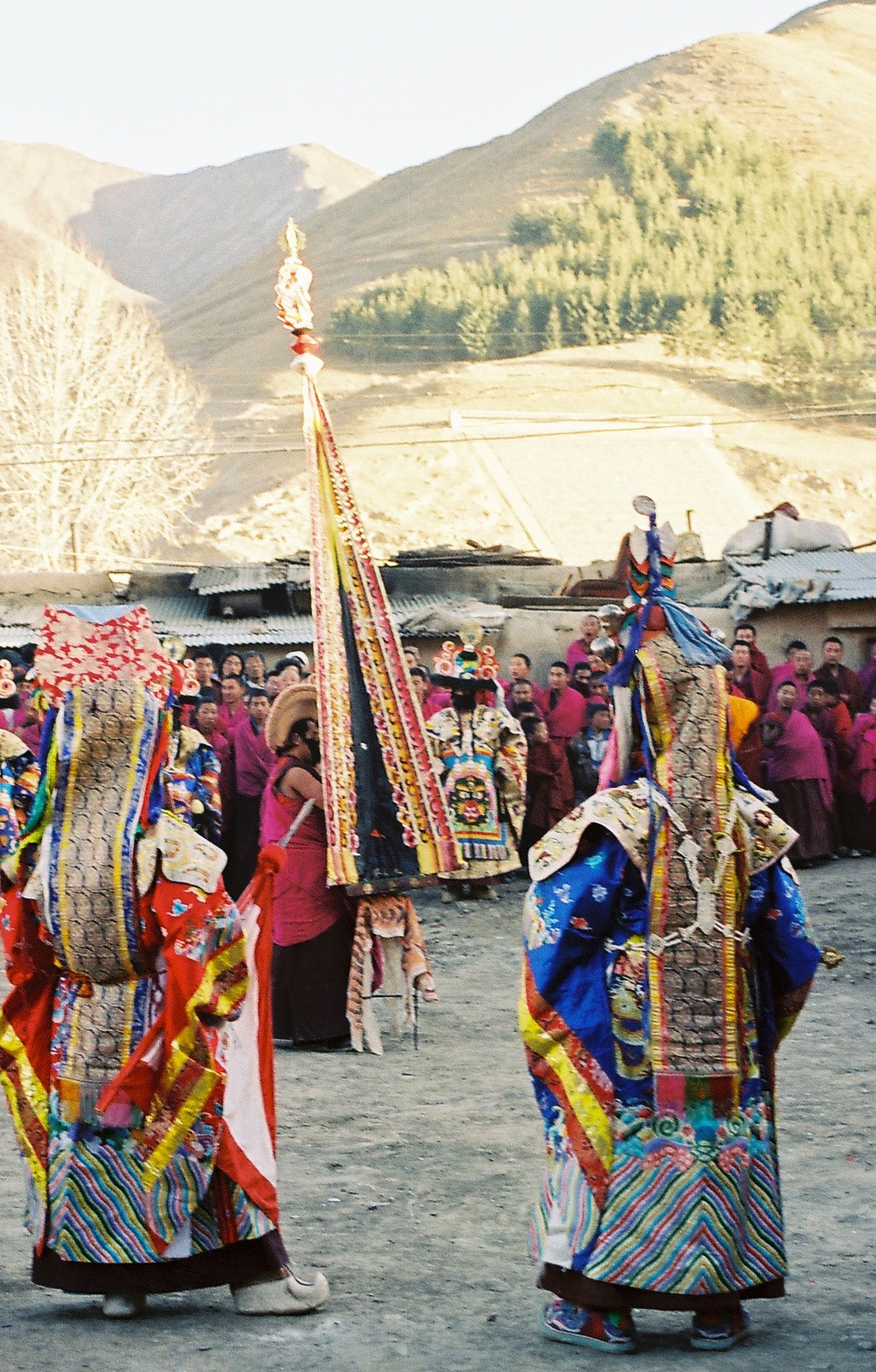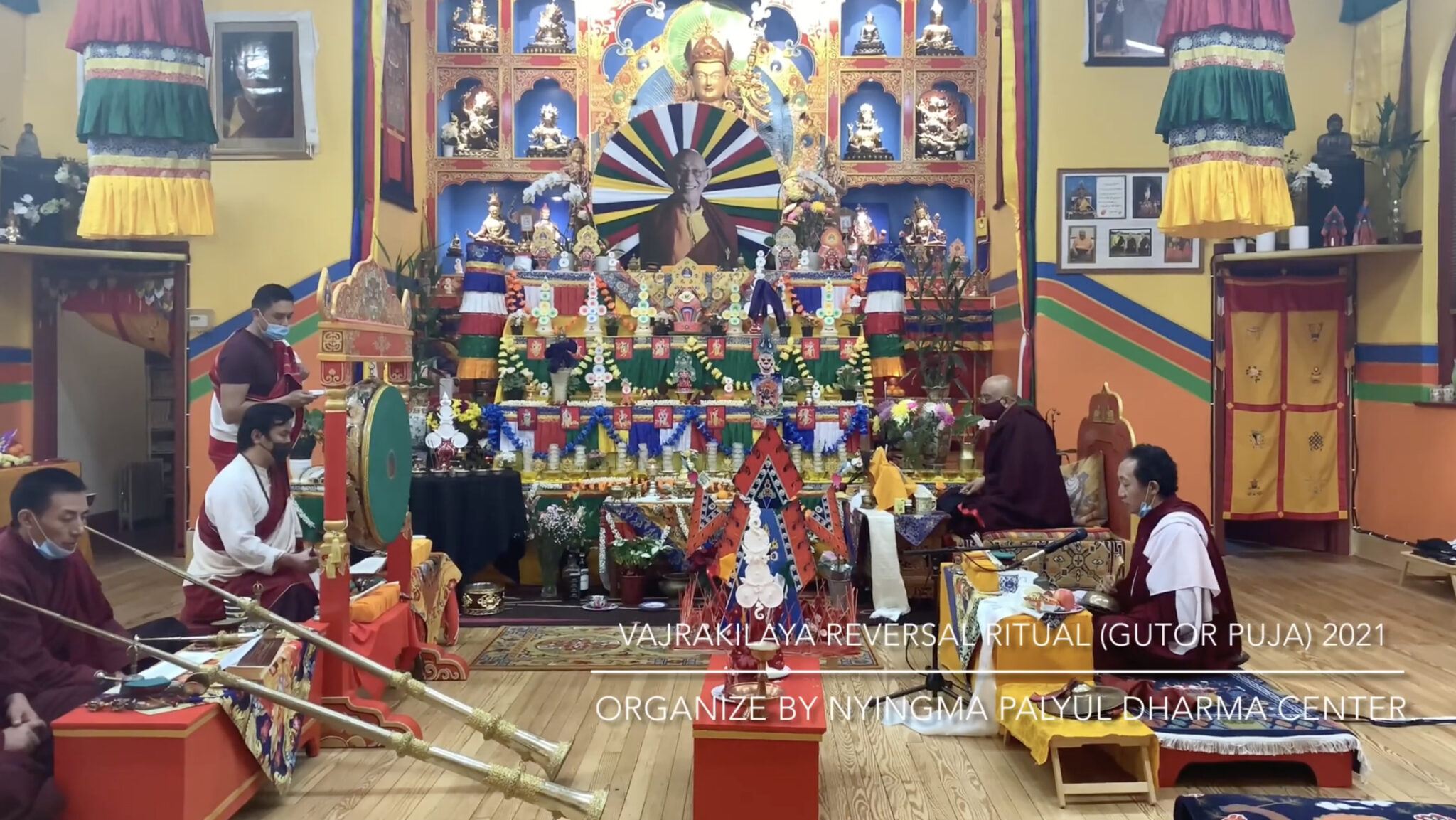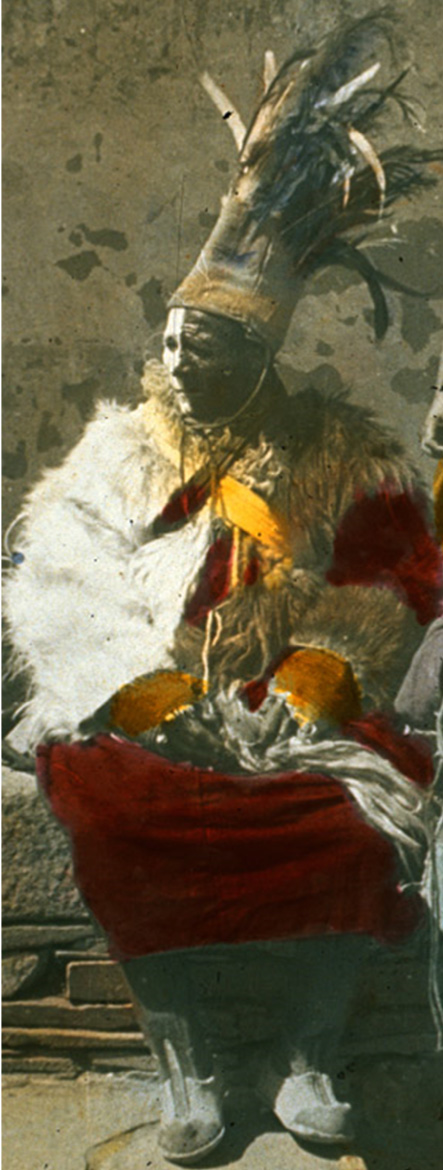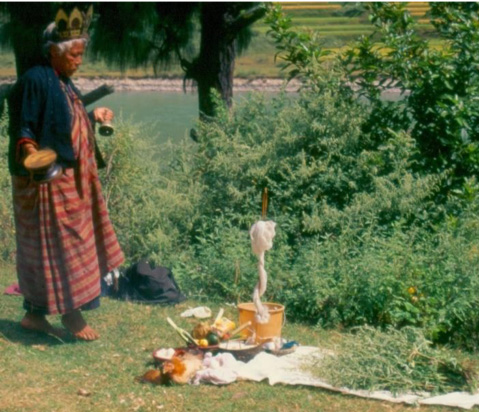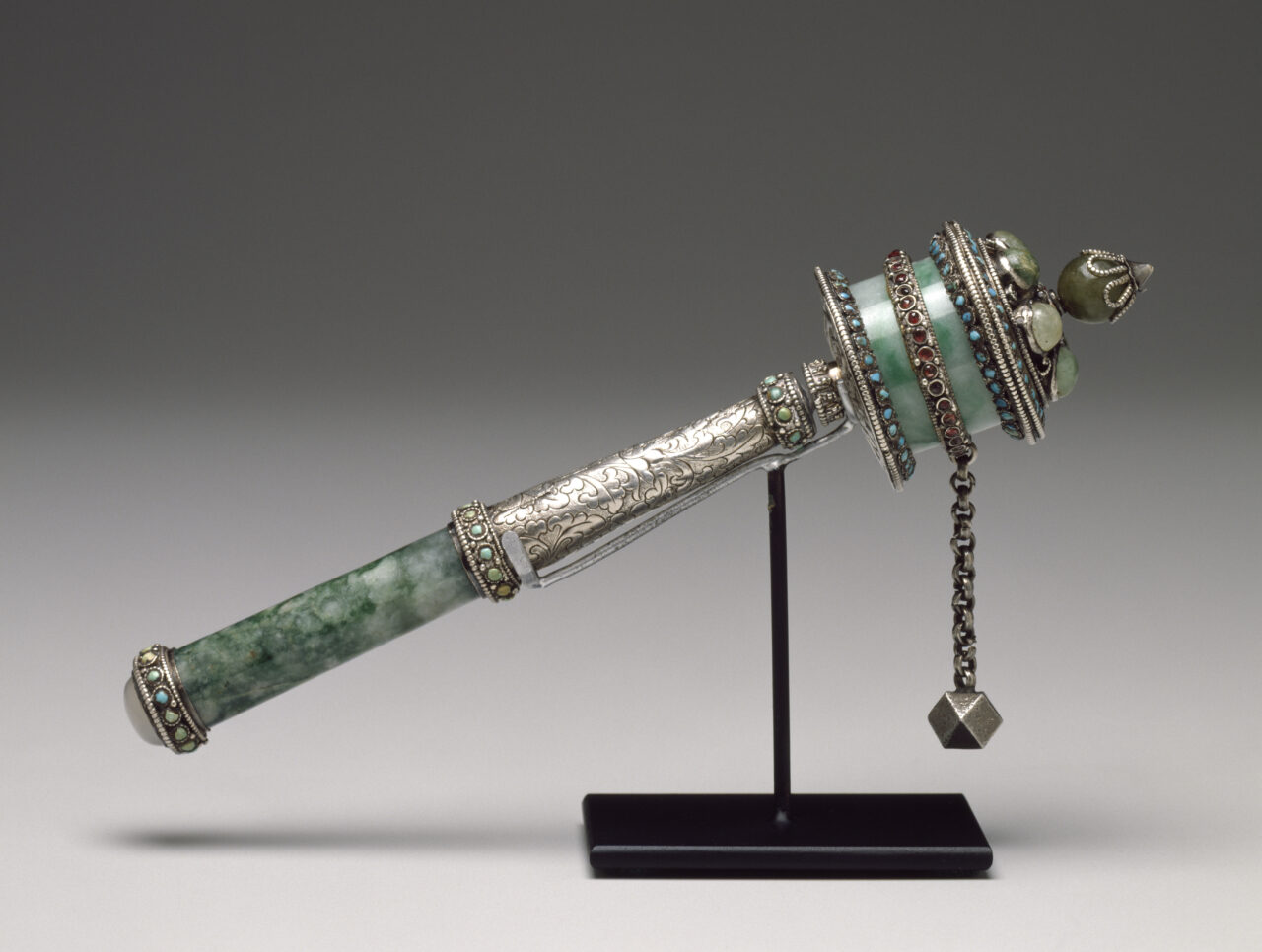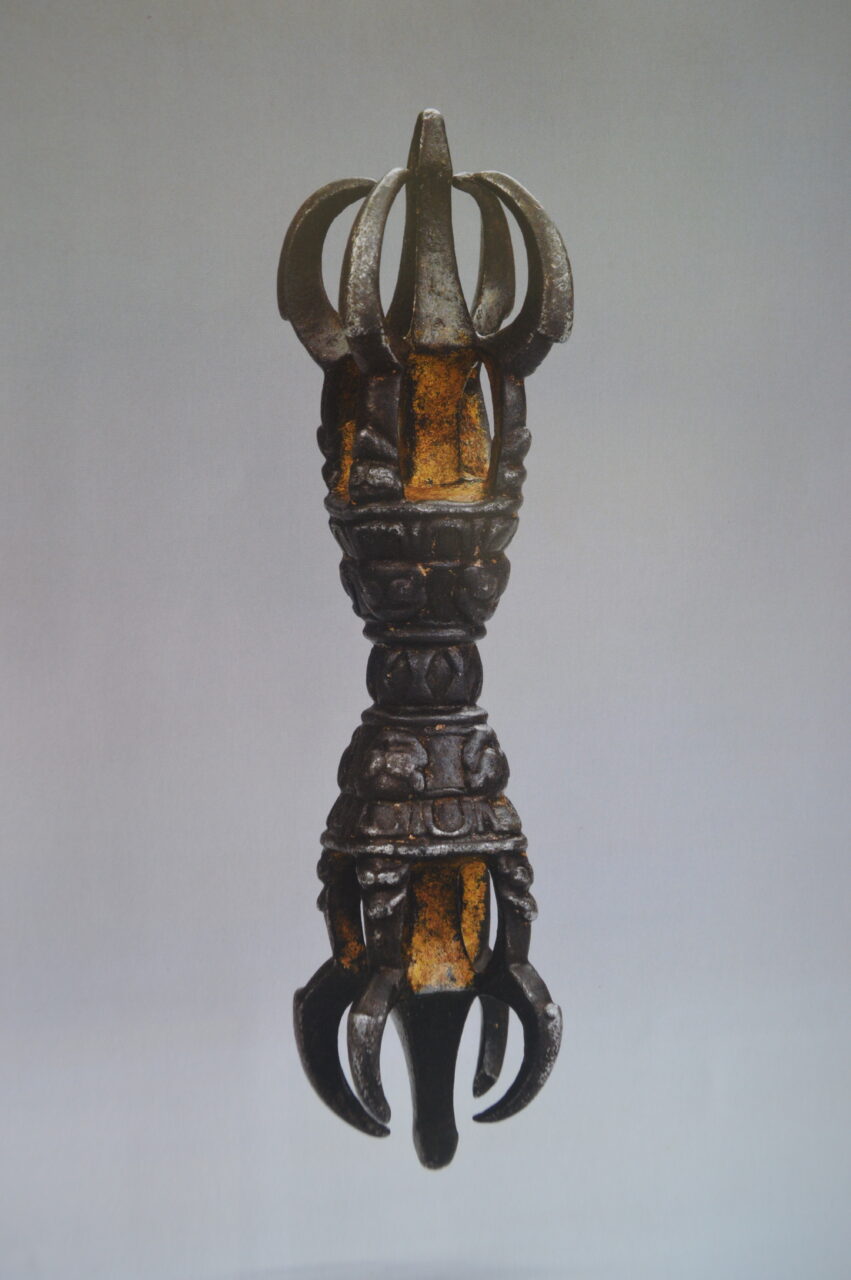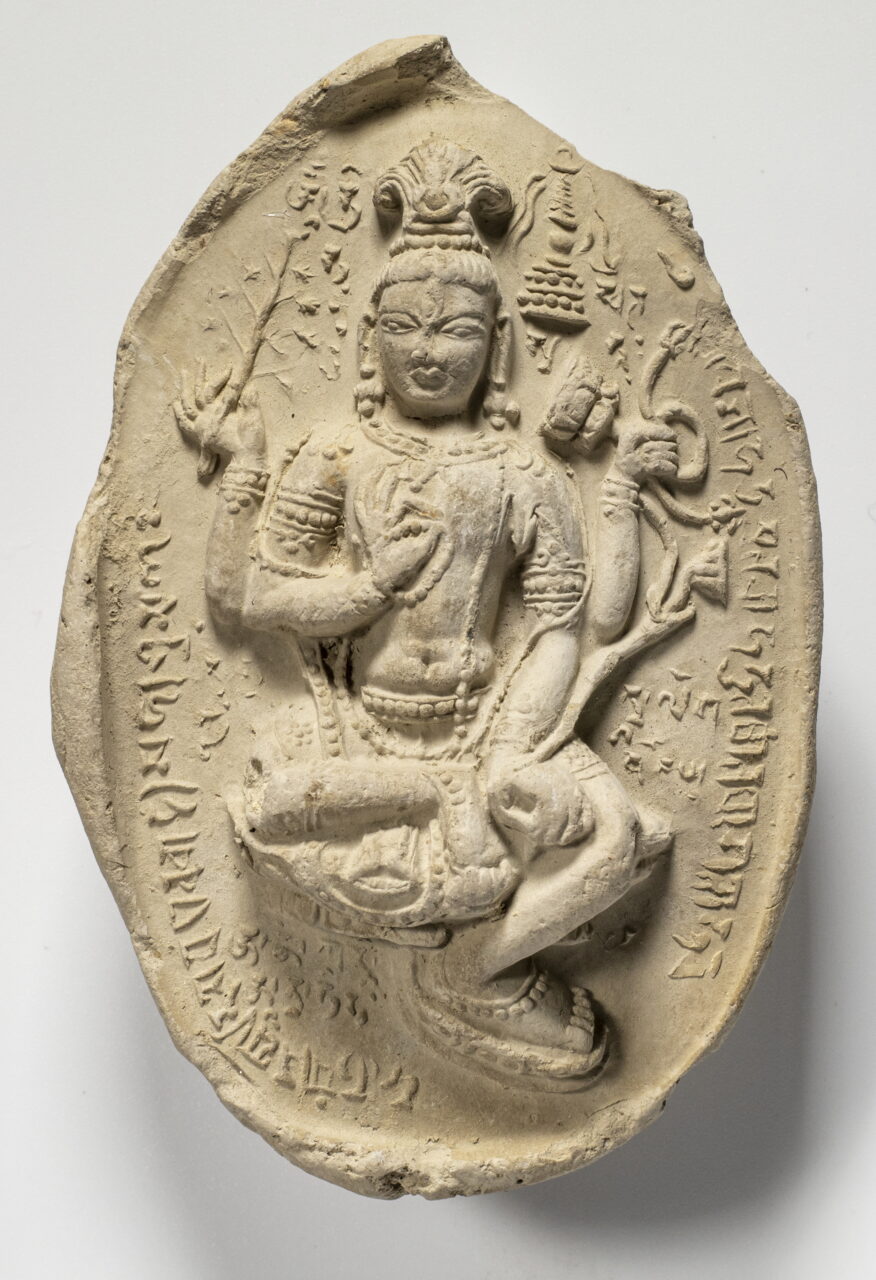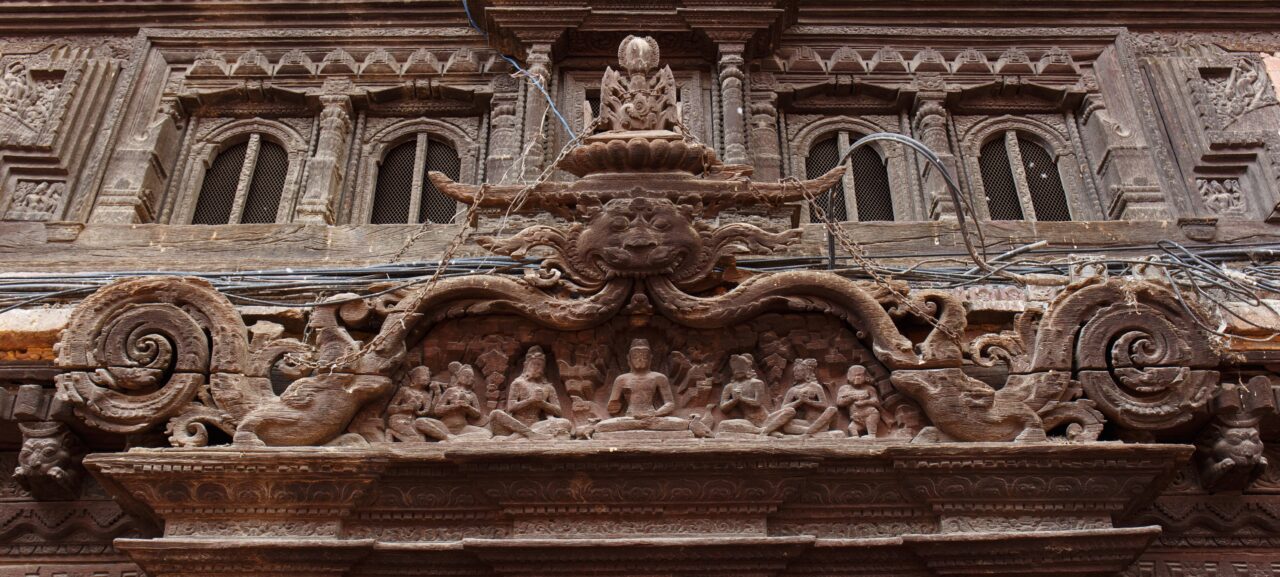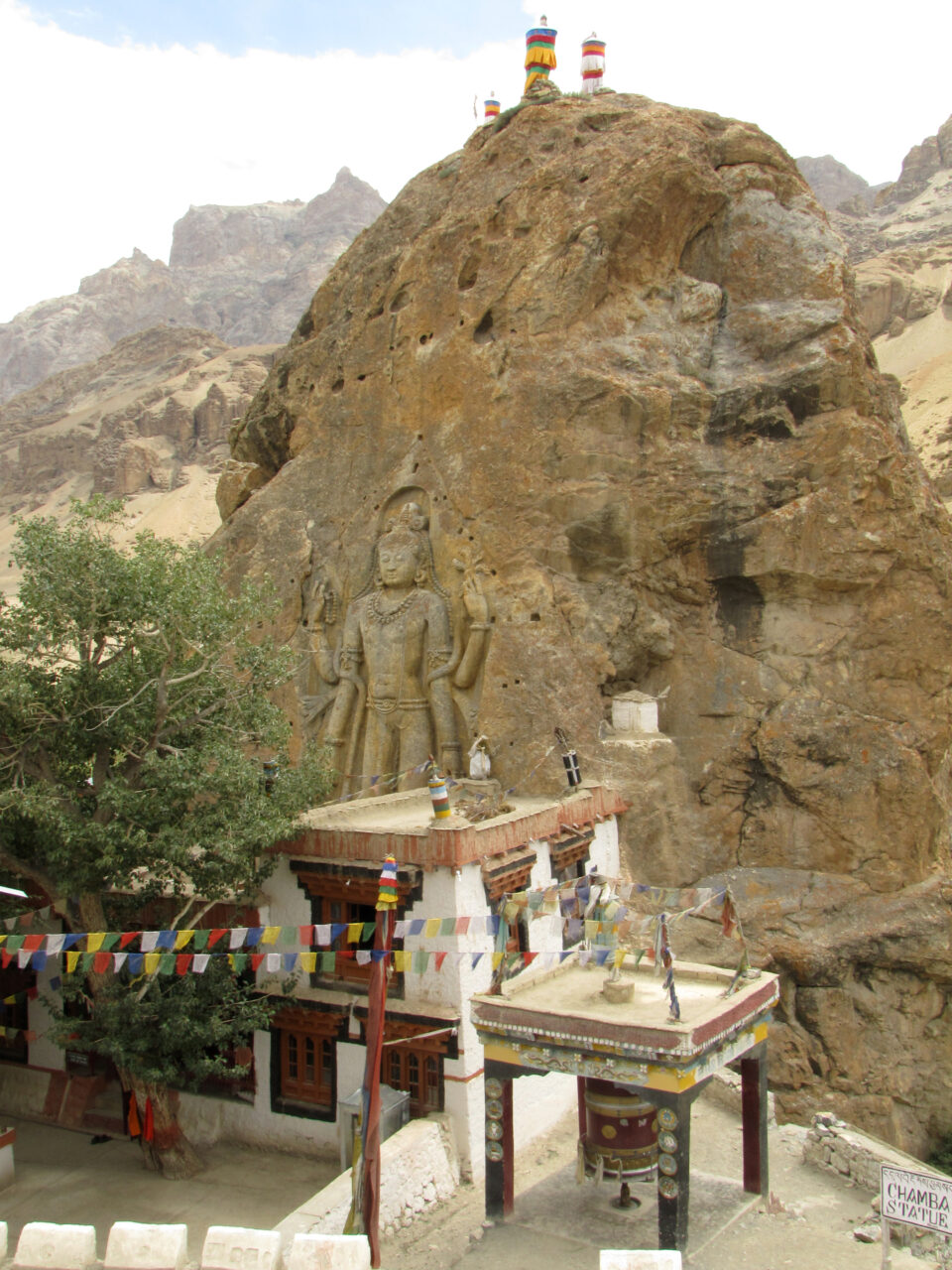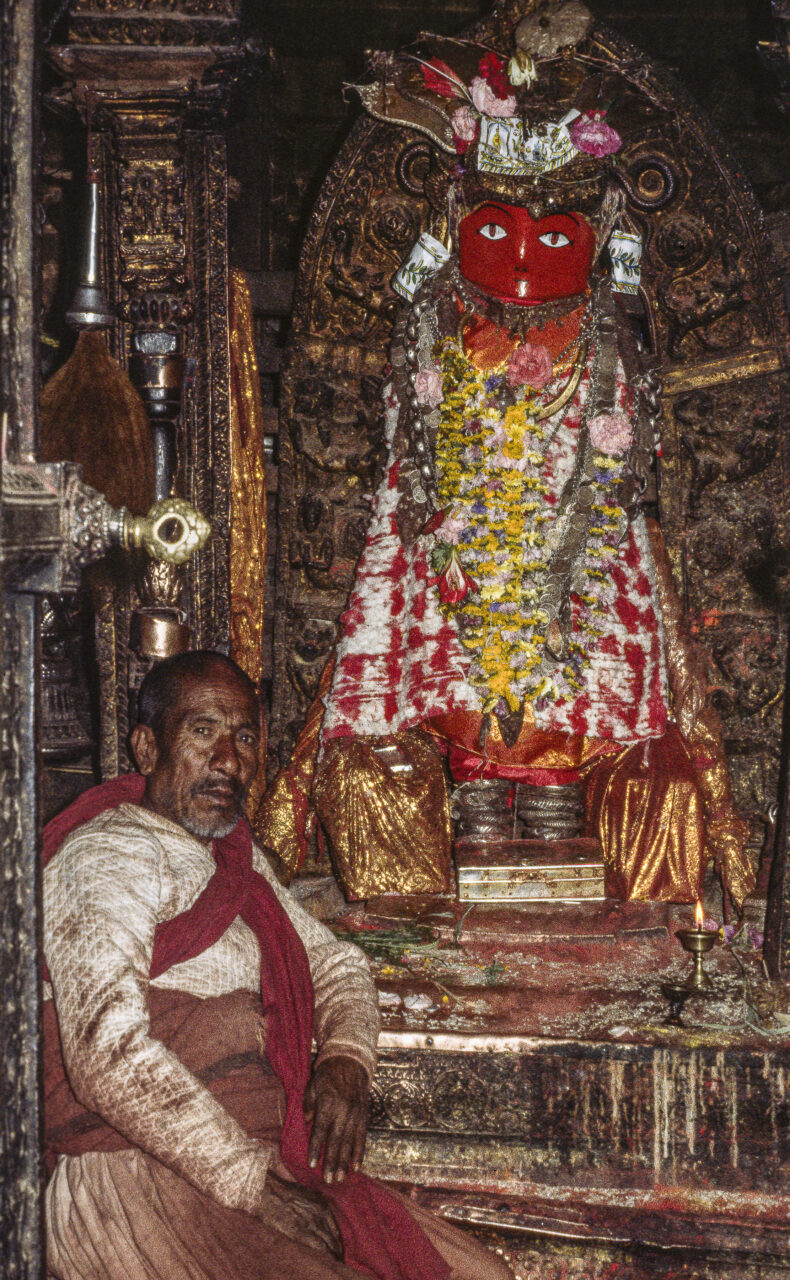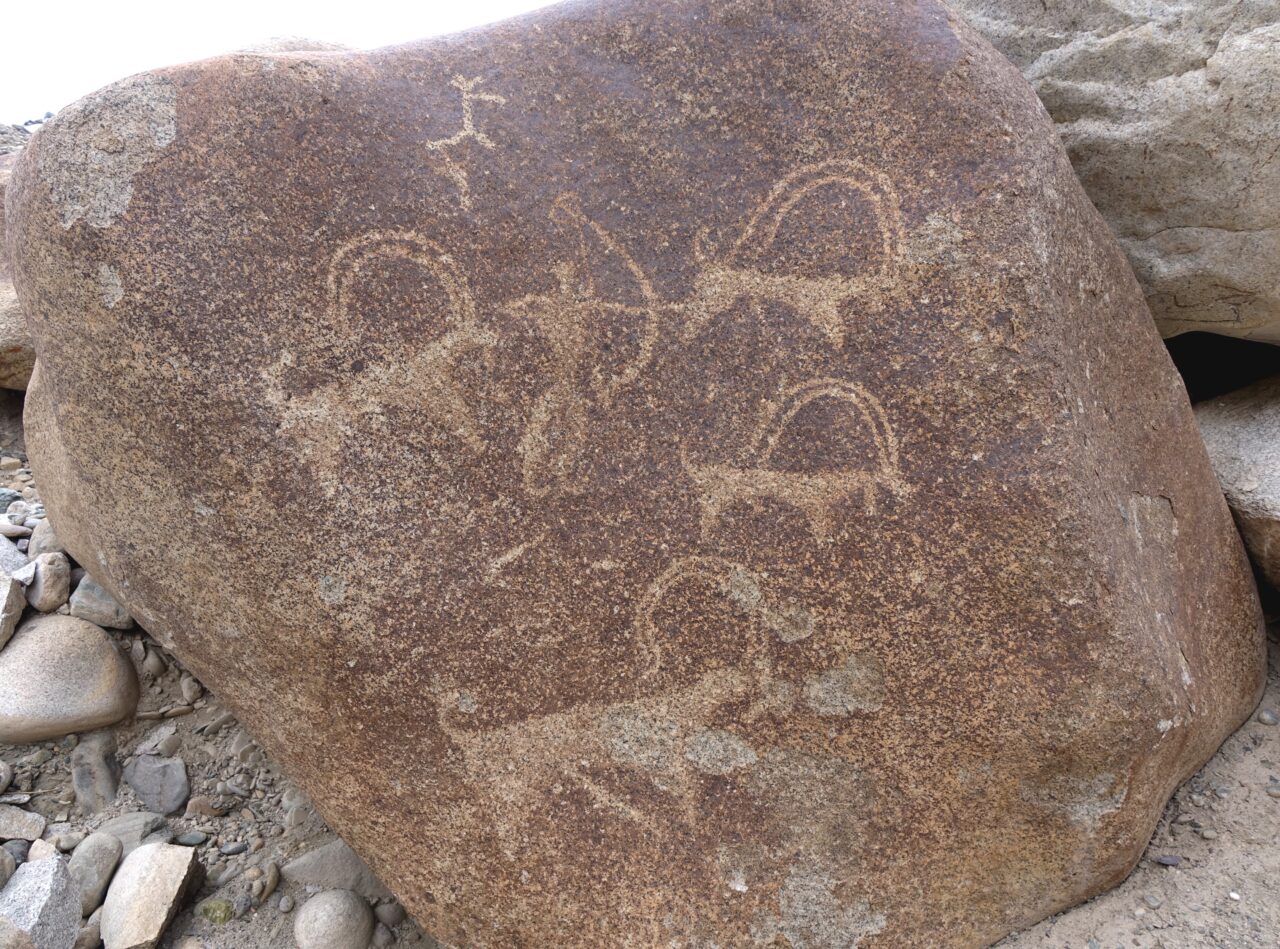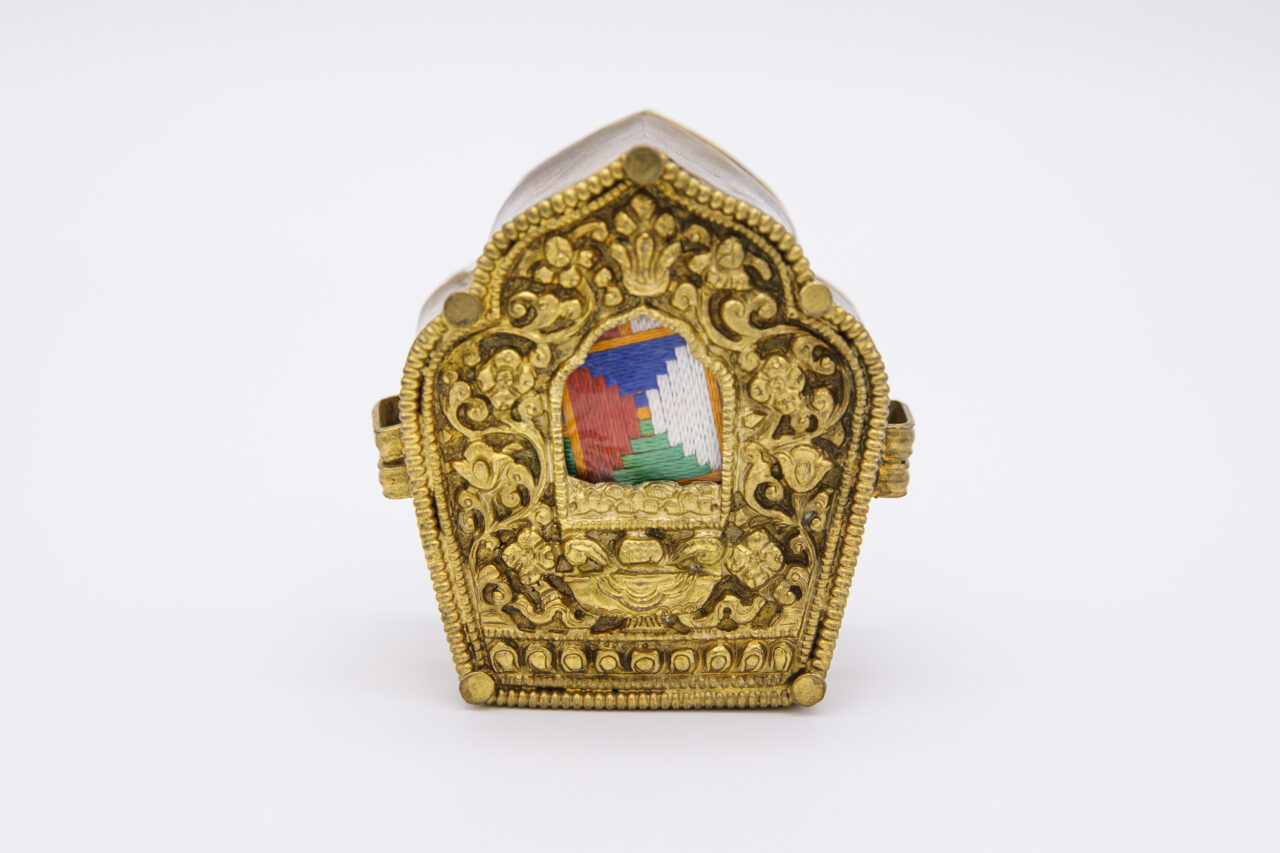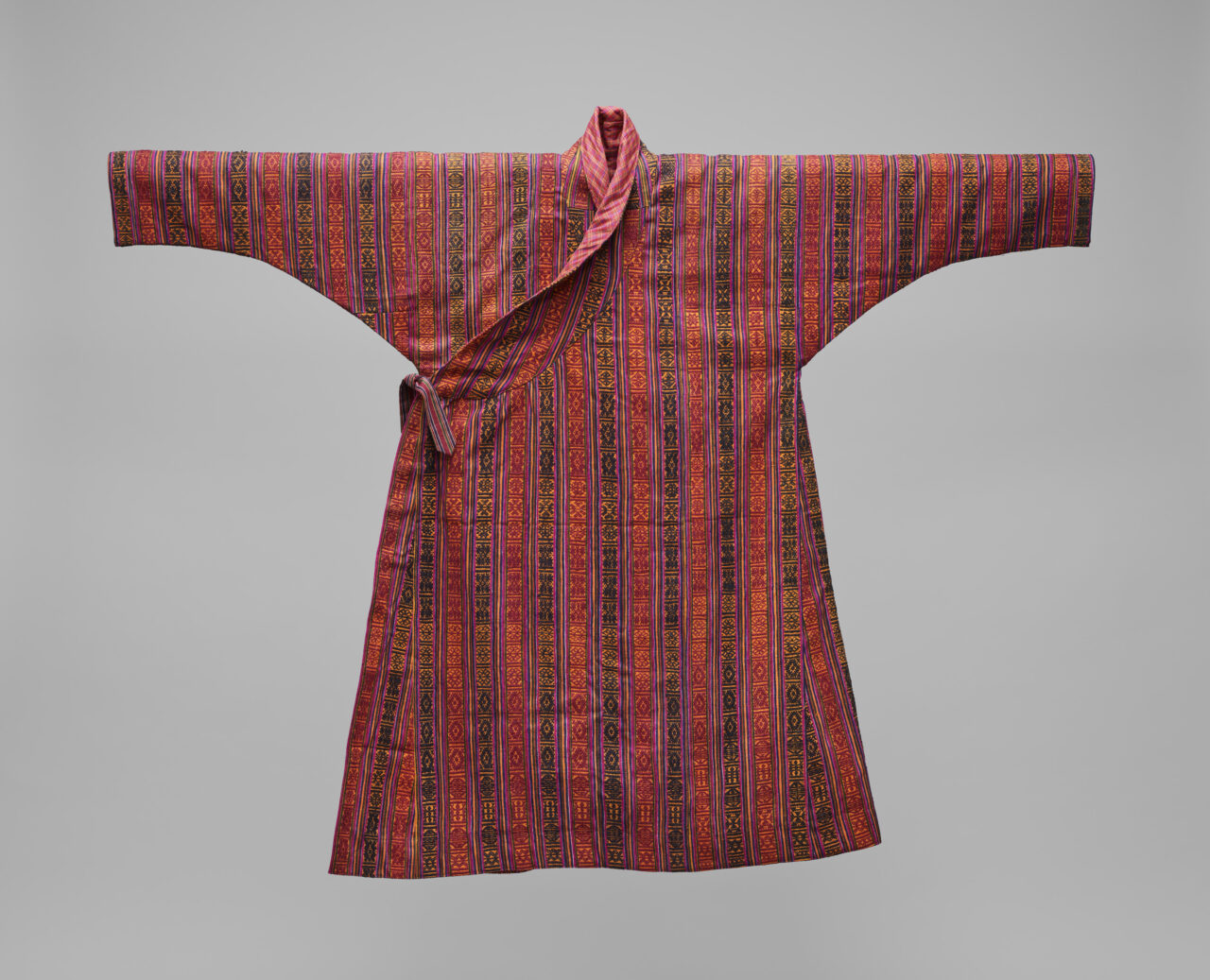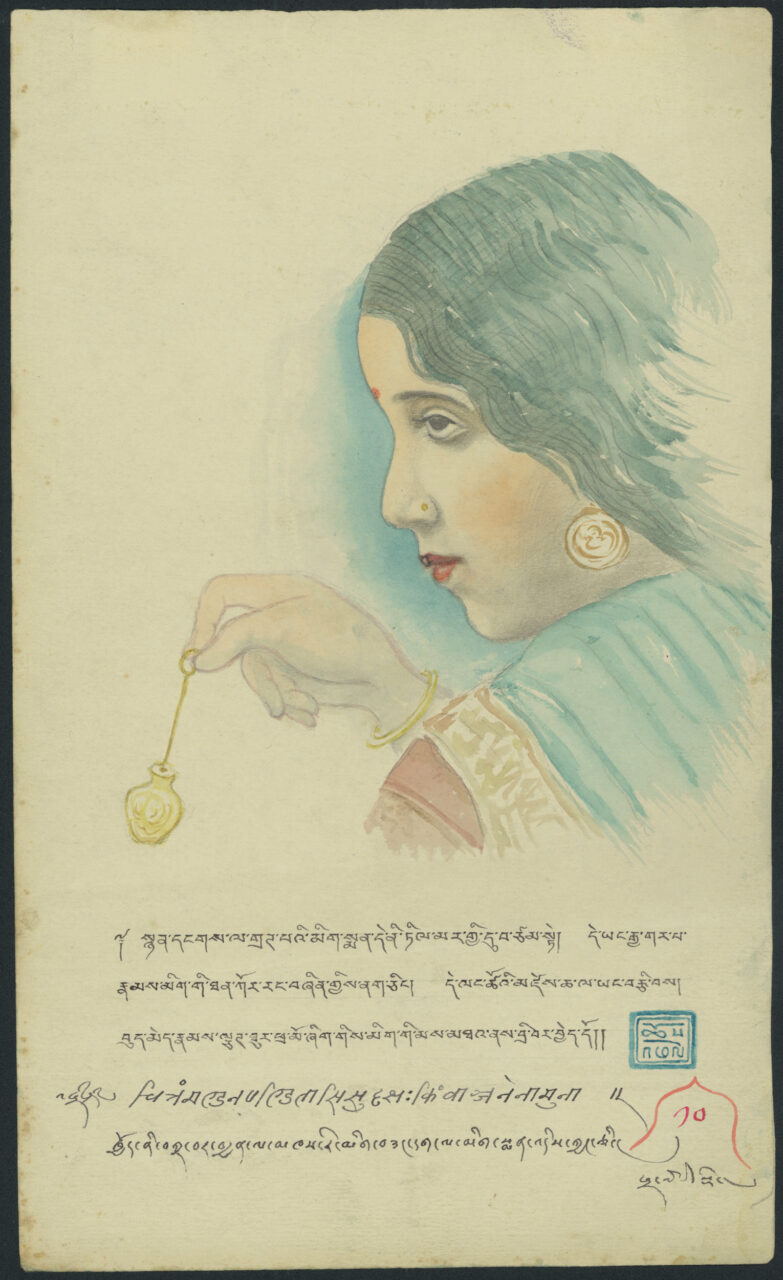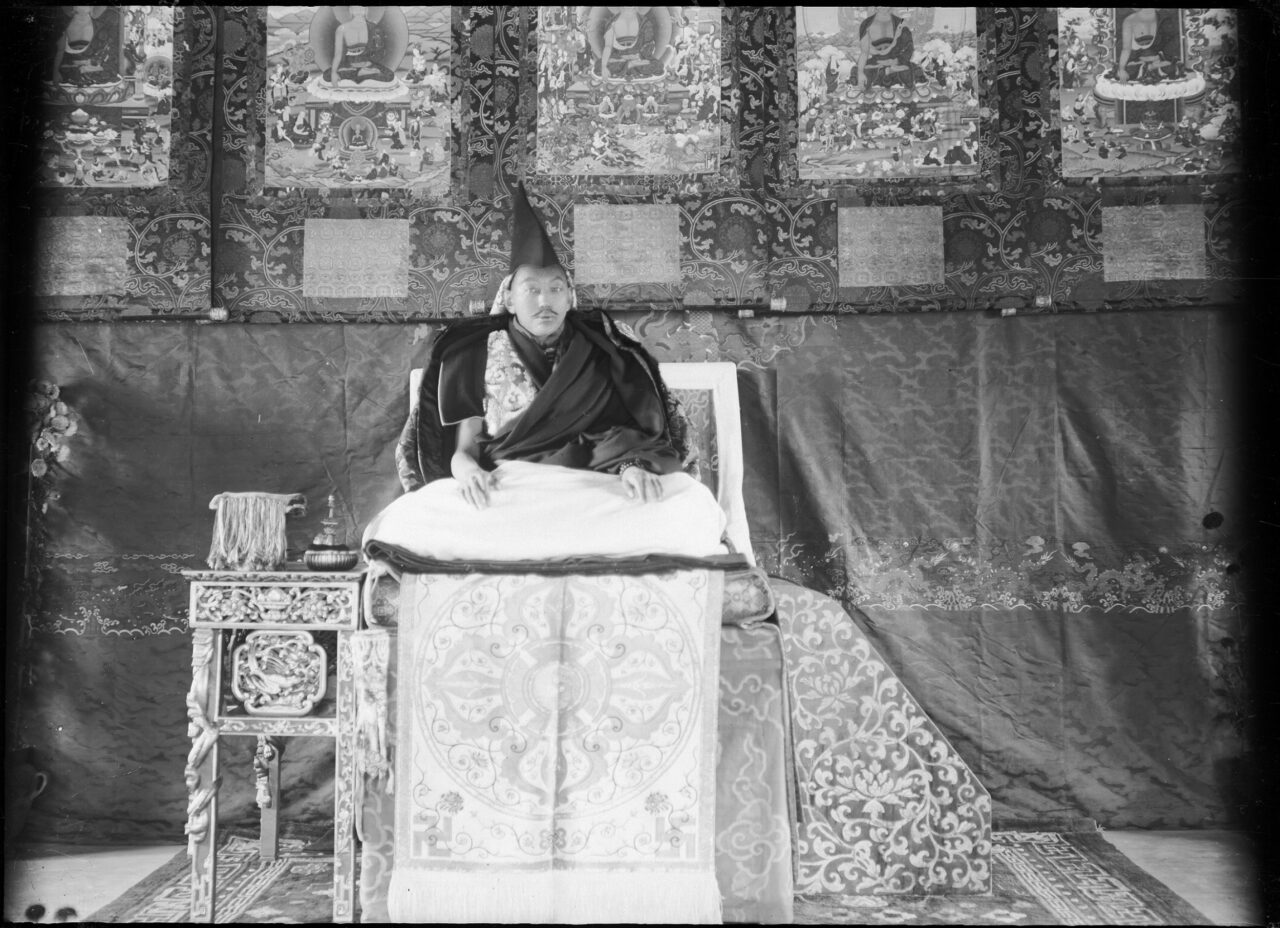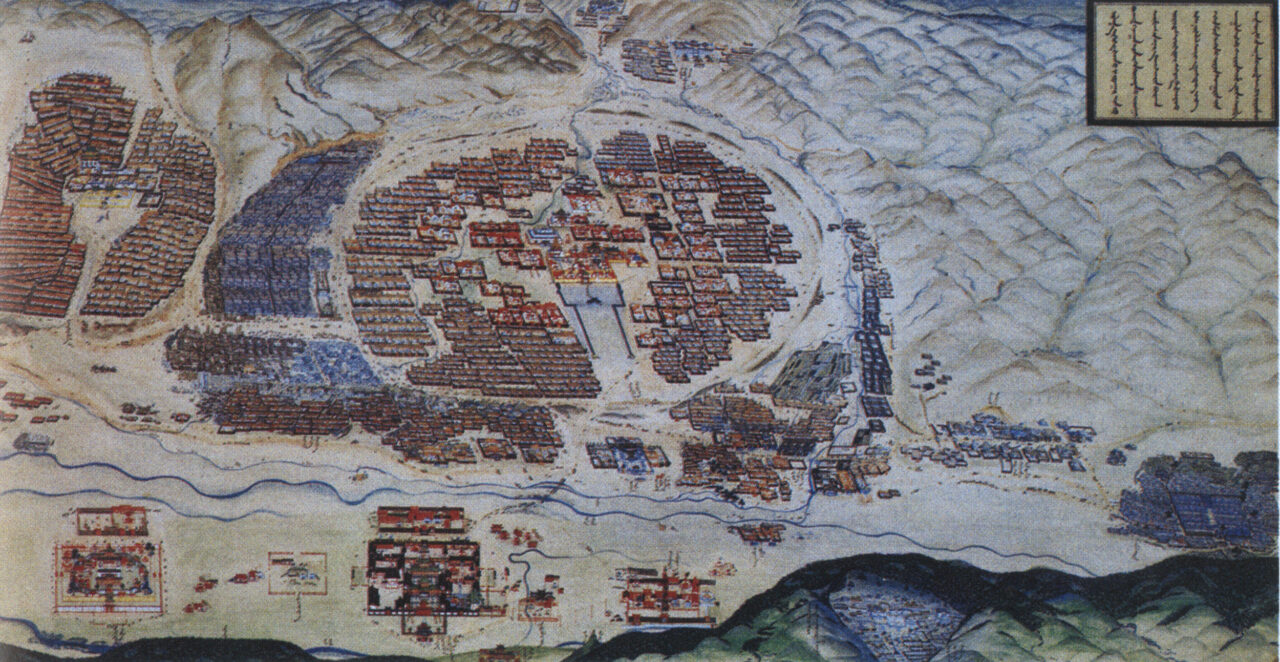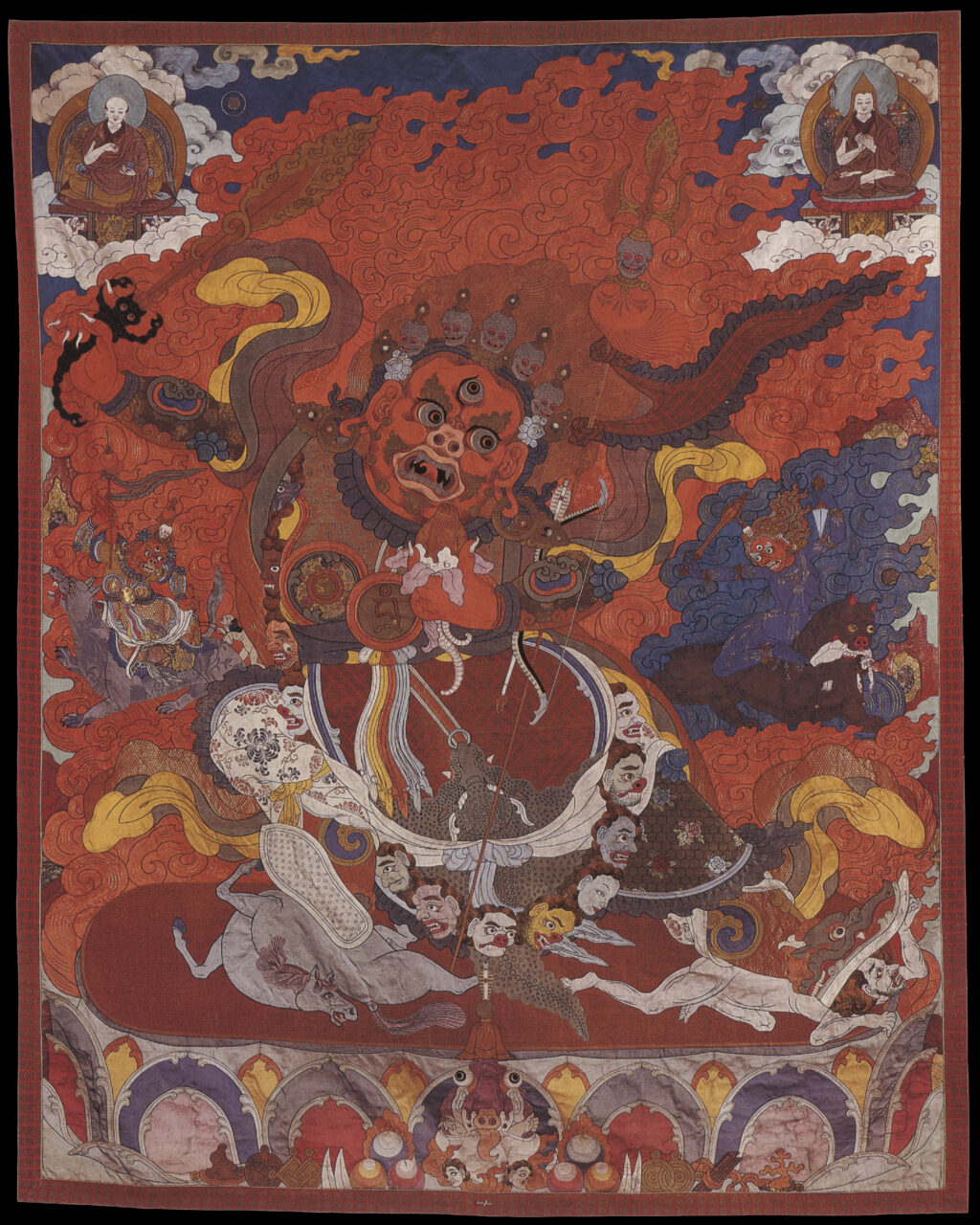An icon is a picture of a sacred figure, while an “aniconic” image does not picture such figure, a god or deity, but instead represents them through symbols. For example, the Buddha can be represented by a wheel, a tree, an empty throne, a parasol, or footprints.
Cham is a type of ritual dance performed in Tibetan Buddhism, often at holidays like the new year or the Monlam Chenmo prayer festival. The cham dancers, who are usually monks, put on masks and perform the actions of the deities they portray. Often these dancers are understood to “become” the deities. The dances often have an exorcistic function and generally are performed for the benefit of an entire community.
Hinduism and Buddhism both hold that actions (Skt. karma) have inevitable results which may take a shorter or longer time to occur. Mental, verbal, and physical actions all have positive or negative consequences and are considered karma. Depending on conditions, karma can manifest results either in this or future lives. Karma directly relates to the idea of reincarnation, and positive karma can also create religious merit and lead to a better rebirth, while negative actions, or karma, result in worse experiences in the present and future lives. Buddhists strive to achieve enlightenment to escape this cycle of karmic action and consequence.
The Panchen Lamas are an important tulku, or reincarnated lama lineage, in Tibet considered second in prestige within the Geluk tradition only to the Dalai Lamas. The Fifth Dalai Lama (1617–1682) declared that his tutor Lobzang Chokyi Gyeltsen (1570–1662) was the incarnation of Amitabha and granted him the title Panchen. Three “pre-incarnations” were identified, making Lobzang Chokyi Gyeltsen formally the fourth in the lineage. A special teacher-student relationship exists between the Dalai and Panchen lamas, when one passes away the other takes charge of identifying and educating the new incarnation. The traditional seat of the Panchen Lamas is Tashilhunpo Monastery in Shigatse.




